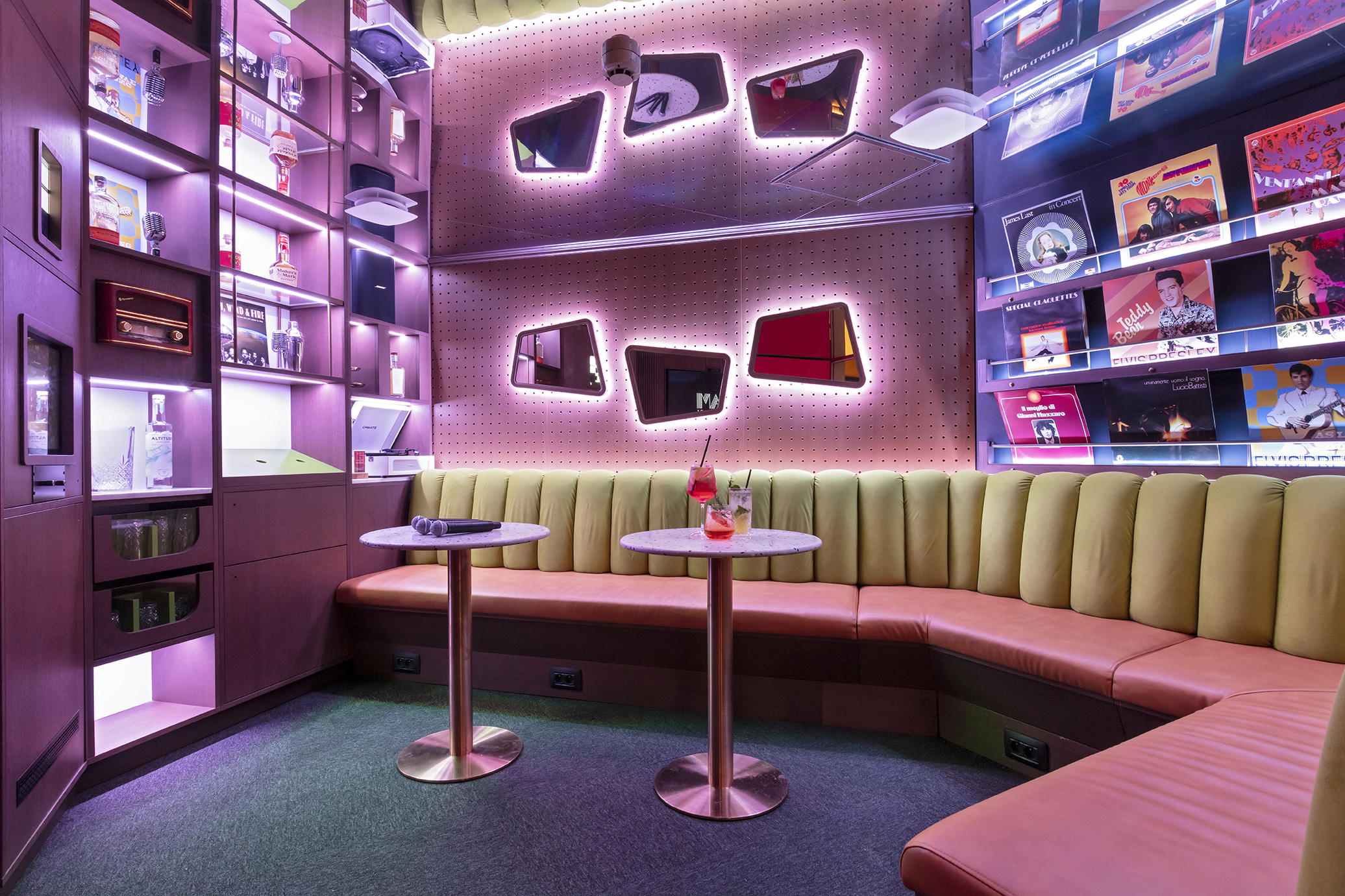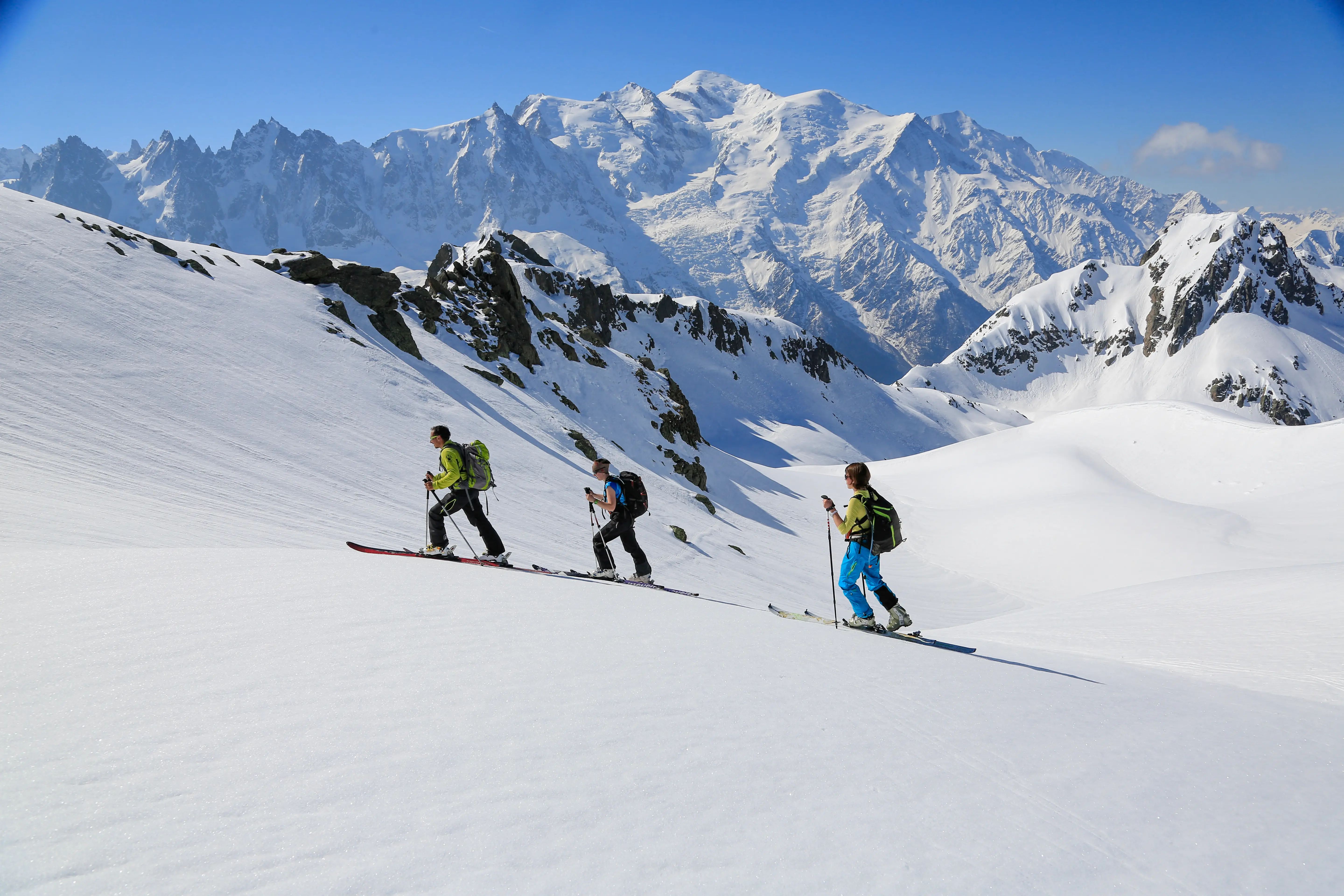From the Refuge des Aiglons, you can take one of the 170 itineraries listed in the Chamonix Valley to discover its natural wonders, one of the most beautiful of which is Mont Blanc. The highest peak in Europe modelled by its eternal snow, you will be captivated by this guardian of an incomparable natural beauty.
Discover Mont Blanc
Between legends and exploits, the massif offers a thousand and one stories to tell by the hotel's fireside overlooking Mont-Blanc.
Mont-Blanc: a cursed mountain
Until the middle of the 18th century, Mont Blanc was considered by the inhabitants of the valley to be a cursed mountain. Moreover, one of the peaks of the massif is still called “Le Mont Maudit” today. This popular belief comes to us from ancient Rome where it was then possible to take the Pass of the Giants with your herd until the day when the ice demons took over the mountain pastures, thus pushing men and their animals to the bottom of the valley... This advance, the presence of the enchanted kingdom of fairies, whose queen is called the white goddess, but also the invisible evil spirits therefore seriously frighten the populations, especially at the beginning of 18th century that sees the Mer des Glaces getting dangerously close to Chamonix.
Conquering the peaks
But all these legends did not frighten Horace-Bénédict de Saussure, physicist, geologist, naturalist and grandfather of the linguist. Indeed, in 1786, when he tried to climb Mont Blanc, he already participated in various expeditions that led him to climb the Grammont, to explore the Valsorey Glacier, to climb Michel Rock... But Mont-Blanc resists him, just as he has resisted Michel Paccard, doctor and botanist from Chamonix since 1783. So, Saussure is launching a challenge and promising a strong reward to anyone who reaches the summit of Mont-Blanc first. And, on August 8, 1786, around 6 p.m., Michel Paccard accompanied by Jacques Balmat, then a modest chamois hunter and 24-year-old crystallizer, reached the summit of Mont Blanc for the first time. The two men thus enter the history of the Mount, the roof of Europe, but also of the valley, which saw mountaineering then created with the influx of customers as early as 1787.
Structure of the Mont Blanc massif
The Mont Blanc massif is a mountain range that culminates at an altitude of 4800 meters and extends over about 400 km.2 approximately. It mainly encroaches on the French department of Haute-Savoie, but also on the Aosta Valley in Italy and the canton of Valais in Switzerland. This is how it was divided into several areas:
- the domes of Miage and Tré la Tête;
- the core group, which includes the summit of Mont Blanc itself;
- the Aiguille Verte, Les Drus;
- the Aiguilles de Chamonix: from the Aiguille du Midi to the Aiguille des Grands Charmoz;
- the Grandes Jorasses;
- The Aiguille d'Argentière group.
The most important valleys are linked together thanks to Mont-Blanc Tunnel, the Petit-Saint-Bernard pass, finally the Col des Montets through Vallorcine.
The essential sites to visit starting from the Refuge des Aiglons
Ideally located in the heart at the foot of Mont Blanc, the Refuge des Aiglons allows you to go, summer and winter, to all the most remarkable points of the resort. Whatever your level of skiing or that of your hikes, it will be easy for you to discover the various alpine sites. Ask at the hotel reception for the different schedules of the cable cars or any other useful information to best discover Mont Blanc and the Chamonix Valley.
L'Aiguille du Midi
THEAiguille du Midi is the most famous of the Aiguilles de Chamonix. World famous, it is accessible by cable car from Chamonix, whose center is accessible in a few minutes from the Refuge. In just 20 minutes, you are raised to 3842 m on the summit terrace of the Aiguille which offers a 360° view of the mountain range of the French, Swiss and Italian Alps. And, to extend this full of sensations, you can test the main attraction of the Aiguille: the step into the void. This glass box is, in fact, suspended at an altitude of over 1000 meters: thrills and memorable memories guaranteed...
The Sea of Ice
Take the small cog train to the Montenvers site, located at an altitude of 1913 m, to discover the Drus and the Grandes Jorasses, but especially the Mer de Glace which, during the greatest ice age, arrived at the gates of Lyon! Visit the glaciorium, and the ice cave that is detailed every year: genuine wonder in store for adults and adults alike.
The lakes and waterfalls
During your various trips and visits in the Chamonix Valley, you will discover a variety of fauna and flora, full of jewels and splendors. Children will be excited to get up close to the shy ibexes. And, as you stroll along the water, let yourself be overwhelmed by the whimsical power of the torrents and waterfalls that hug the reliefs in a joyful noise. Enjoy the serenity of the Great Lakes, like the Lac Blanc, jealously guarded by Mt.
Do not hesitate to ask us to obtain all the information you need to best prepare your wanderings in our Valley, for which lunches and picnics can be prepared to order.
Discover all the activities offered by the hotel by browsing our site. The entire Refuge des Aiglons team is at your disposal to welcome you and make your stay an enchanting break at the foot of Mont Blanc.
The history of the Mont Blanc massif in a few dates...
1910: the construction of the “Glacier Funicular” was launched by the Société du Funicular Aiguille du Midi-Mont-Blanc, but was definitively abandoned in 1950 in favor of the current funicular.
1924: Chamonix-Mont-Blanc welcomes nearly 300 athletes who came to the first Winter Olympic Games.
1932: first radio program produced from the summit of Mont-Blanc by Roger Frison Roche.
1954: commissioning in two stages of the cable car rising to 3,842 meters.
1955: The Aiguille du Midi cable car is put into service when the summit of Mont Blanc sees its first helicopter landing.
1960: Aviator Henri Giraud lands on a runway less than 30 meters long at the summit of Mont-Blanc.
1965: inauguration of the Mont-Blanc Tunnel by General de Gaulle and the Italian President Giuseppe Saragat, despite the slight dispute over the precise location of the border between France and Italy.
1973 and 1982: Mont-Blanc saw its first hang-glider takeoff by Rudy Kishazy then its first paragliding takeoff by Roger Fillon.
1986: Tony Bernos landed by parachute at the summit of Mont Blanc before making the first snowboarding descent.




